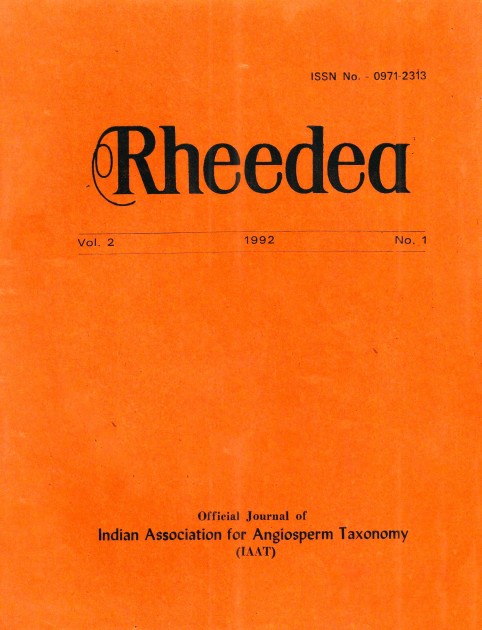Anthecology, Chorology, Adaptive features and Taxonomy.
Meeuse A.D.J.
Published on : 01-Jan-2022
DOI : https://dx.doi.org/10.22244/rheedea.1992.02.01.04
DownloadAbstract
In the anthecology and chorology certain recurring combinations of features referred to as 'syndromes' are recognised. Most of these are so manifest that they have a predictive value, but one must be aware of the taxonomic aspects principally because so many 'adapted' characteristics form part of these syndromes. Such 'adaptive syndrome elements undoubtedly originated independently. as convergencies in unrelated taxa. but on the other hand, a diversification of syndromes within a certain taxon (at the generic or a higher level) has taken place. The second development has an immediate bearing upon the evaluation of syndrome characteristics in taxonomic studies because the usually correlated syndrome features and their clearly adaptive nature have often misled phanerogamists who over-rated the taxonomic meaning (weight) of such characteristics or character states, which in turn resulted in a higher grading of closely related taxa than they actually deserve. It follows that the not so manifestly 'adaptive' charactes may be better taxonomic pointers. What is perhaps worse is that authors have measured syndrome characteristics by different standards, which has led to inconsistencies. Illustrative examples are given to substantiate this conclusion. Future monographers and compilers of Floras ought to pay heed to the suggestion made in this paper and should not hesitate to disregard the syndrome features i n favour of other indications of taxonomic affinities.
